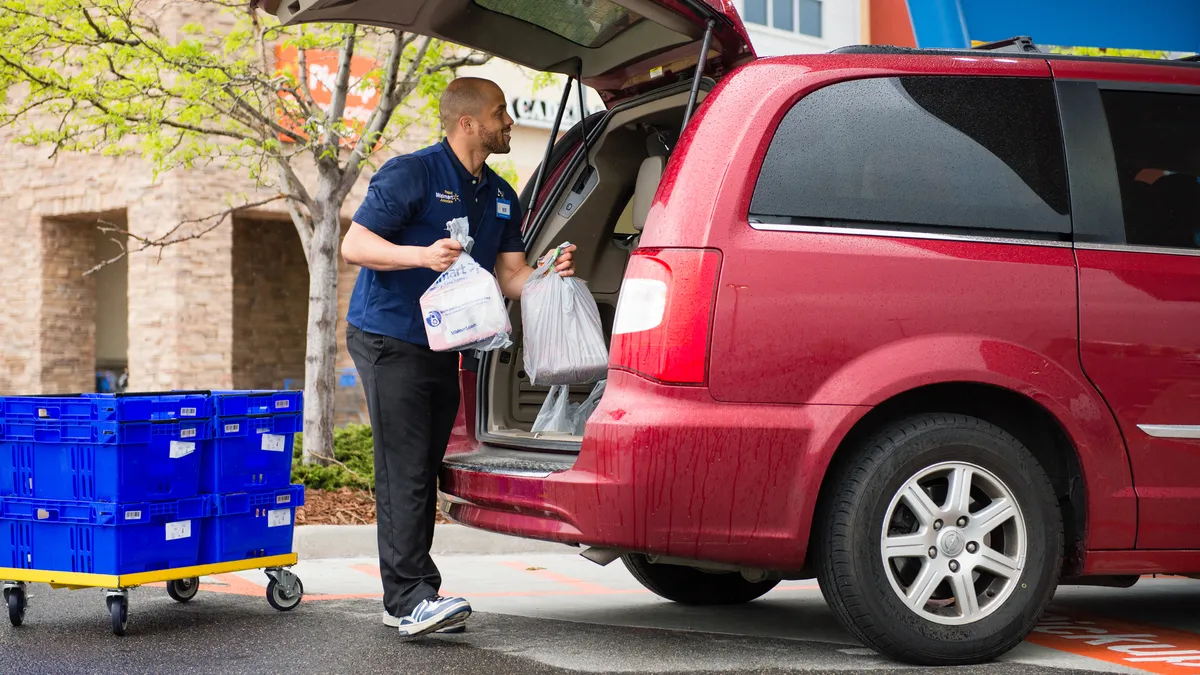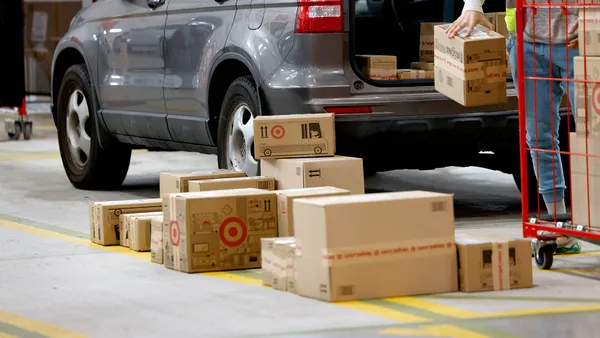Dive Brief:
- In addition to a flurry of store sales that have emptied shelves across the country, grocers are seeing a rush for household essentials, emergency supplies and other products online, according to reports.
- Amazon Fresh and Prime Now, the online retailer’s two grocery e-commerce platforms, advised customers that deliveries could be delayed. Over the past three days, Instacart’s sales growth rate is up tenfold, while in Washington state — where nine people have died from COVID-19 — as well as California, Oregon and New York, growth rates are up 20 times over normal.
- All this demand has stretched retailers’ supply chains, particularly in pantry items, emergency supplies and personal care products. Searches on Instacart for “powdered milk” were eight times higher than the normal rate, while searches for “vitamins” were up by a factor of 12.
Dive Insight:
Anxiety over the coronavirus is driving shoppers online, where they’re able to purchase the groceries, personal care and medical supplies they need without risking exposure to crowds of people. The surging demand promises a sales lift for retailers — but also another battlefront to contend with in their efforts to resupply their store backrooms and warehouses.
Companies are scrambling to funnel in-demand products to their warehouses and stores. They’re also placing limits on certain items. On its website, Kroger noted it would limit sanitation and cold and flu products to five per order and would modify online orders to meet those restrictions.
“Modern supply chains are lean and efficient, which is great in regular times, but they have surprisingly little slack to deal with panic buying,” Elena Belavina, associate professor of applied economics at Cornell University, wrote in comments emailed to Grocery Dive.
“Retailers who have their own fulfillment centers fully stocked with packaged foods, like pasta, beans and rice, will benefit as local store inventory dwindles and shelves are wiped clean,” Nick Minnick, Chicory’s director of retail development, said in a statement emailed to Grocery Dive.
In addition to strained supplies, grocers have to carefully manage their workforce, particularly in sensitive locations like the Seattle area, where all nine U.S. deaths attributed to the virus have so far occurred. The Seattle Times reported gig workers are so far energized by the increase in work but wary of health risks and increased order loads.
The virus is providing a stress-test for the still-developing online grocery platforms retailers have built out.
Over the past 30 days, 21% of U.S. shoppers have bought perishable groceries online, NPD analyst David Portalatin told Marketwatch, up from 18% during the same period last year.
Data from technology and content firm Chicory shows major demand increases in population-dense urban areas. In Chicago and Sacramento, online grocery orders spiked two to three days after major news announcements involving COVID-19, an illness in the coronavirus family.















